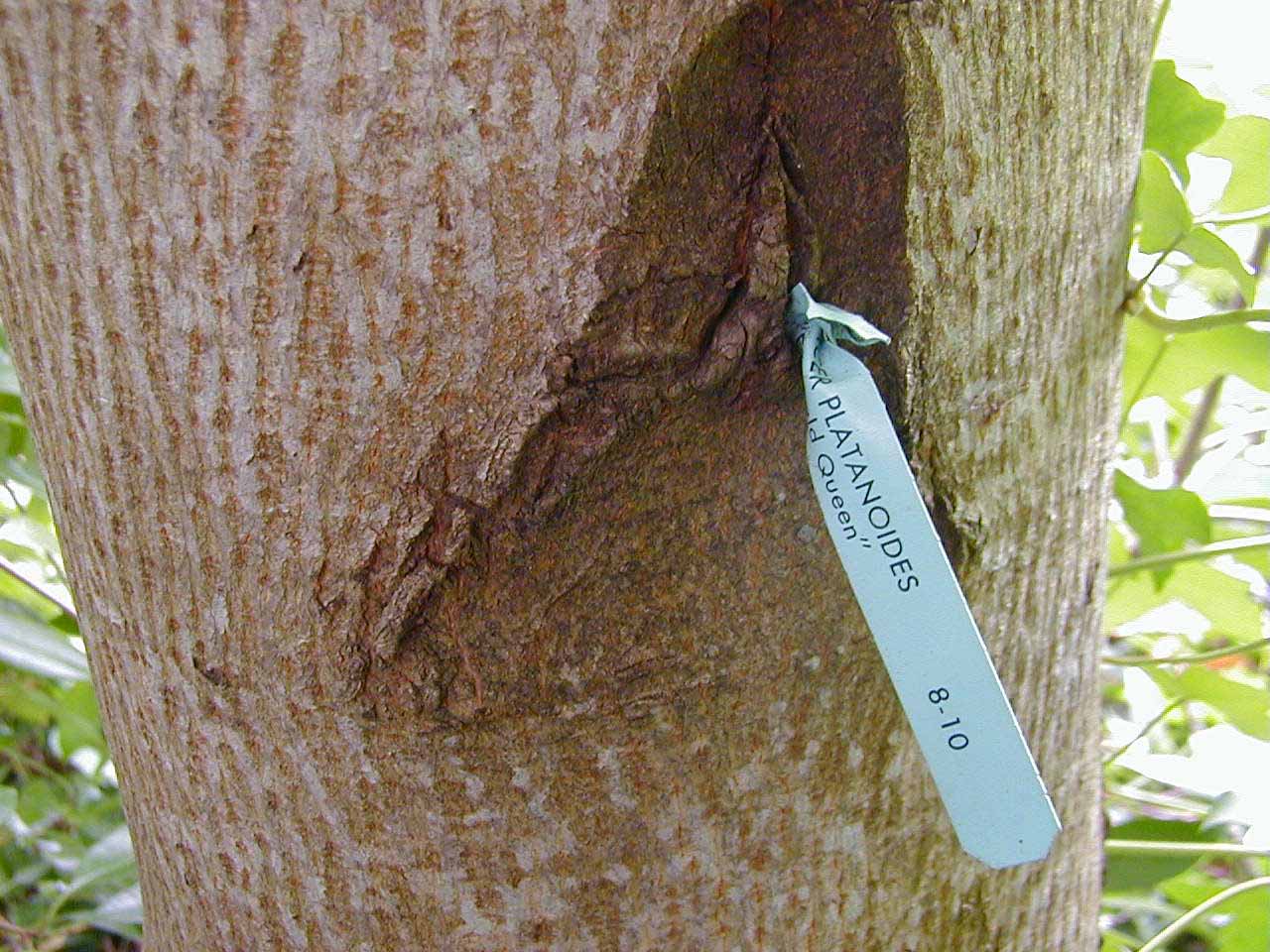Good sleuthing over the weekend! As John, Karen, Jimbo and Al suggested, there is something stuck on the side of this Norway maple (Acer platanoides, which is Latin for “maple that takes over the planet”). In fact, the reason that I, with my pathetic ID skills, know that it’s a Norway maple is because it’s a nursery tag stuck in the tree:

This type of injury really bugs me, because it’s entirely preventable. One of the cardinal rules of transplanting trees and shrubs is to remove all foreign material. And this is a perfect example of why. I don’t know the history of this tree, but this is was I think happened.
The tag was on a branch of the young tree; as the branch increased in girth, it became girdled by the plastic and died back. At the same time, the girth of the tree increased to encompass the base of the branch and the tag. The dying branch was either torn from or broke off the trunk, creating a tear in the bark and creating the horizontal scarring at the base of the wound.
If you’re hopeless with plant names (like I am), keep an electronic database of all the plants you’ve installed in your landscape, including the name, the date installed, and any notes, especially for failures (e.g. not cold hardy enough, invasive, too large, slug snack, etc.).
I feel your pain, Linda. I too hate easily avoidable tree problems. I’m forever cutting suckers off of street trees if I have my seccies handy.
It’s funny – I’ve only in the last three months began keeping a plant database like the one you suggested. Not much in it as yet, but give it a few years!
Lastly, I thought that -oides in a plant name meant ‘plant-like’. For instance, Ceratostigma plumbaginoides would mean ‘Plumbago-like’? Perhaps I’ve been wrong all this time.
Jimbo, you’re absolutely right about “-oides”. My comment was a Dave Barryesque attempt at humor. Norway maple are aggressively invasive in my part of the country as well as elsewhere. Acer platanoides leaves somewhat resemble plane trees (Platanus). [At least I’m refraining from making a dumb joke about that scientific name.]
Righto. Had I understood the cultural reference I would have laughed – I love bad jokes in general. Bad hort jokes are a dream.
Coincidentally, I spend a lot of time in the Village I work for removing these tags from old plantings. Sometimes I even do it at home when I am walking the streets of Chicago. They can do so much more damage than we give them credit for.
-oides: (Greek) like, resembling, having the form or nature of.
From Botanical Latin 4th addition by William Stearn.
since I had a free moment
Not related to the post at all, but as one who also loves hort jokes, I thought I’d pass along my favorite.
Q: Why do melons have fancy weddings?
A: Because they canteloupe.
Ha!
OK, you! We’re going to have a hort joke request posting. Thanks for the idea, Paul!